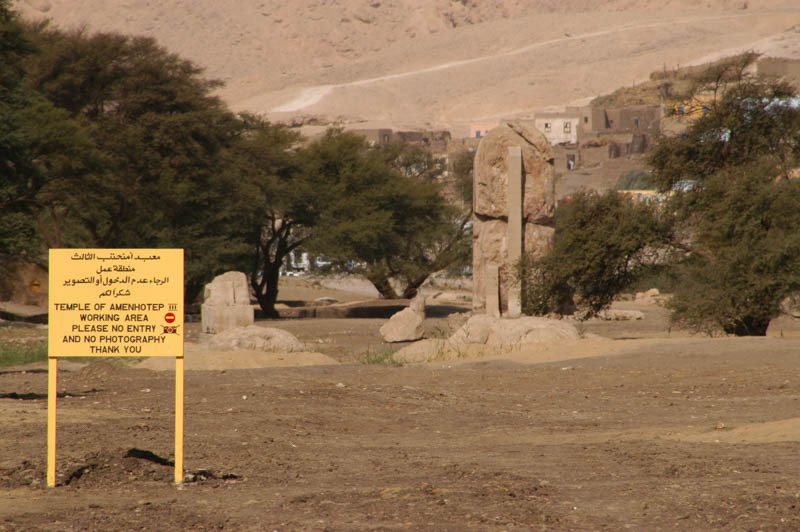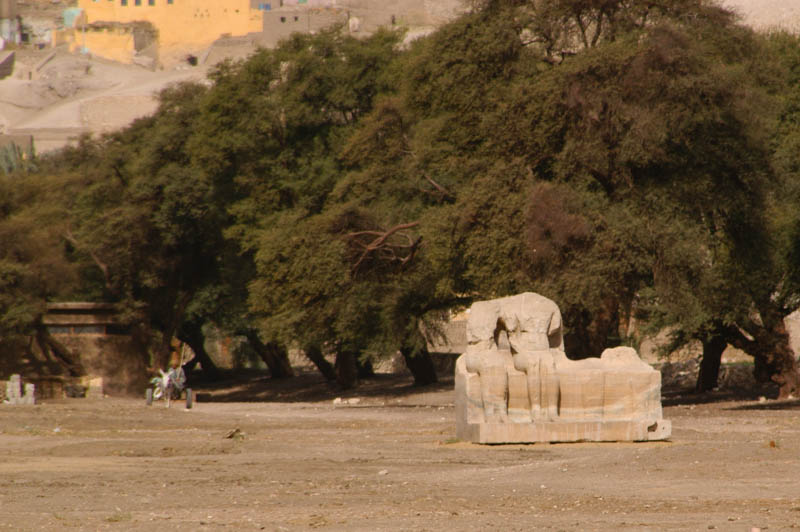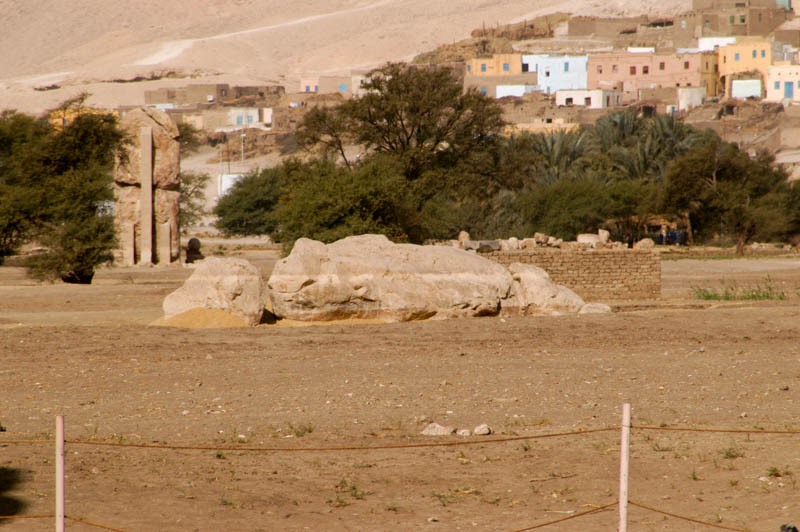Almost nothing remains of the largest temple every built in Egypt — a 700 x 550 meter, 4.2 million square foot temple that would have once stood behind the Colossi of Memnon. (to give you an idea how large that is, the entire Mall of America is only 2.5 million square feet). It has never been fully excavated, and only a few statues and the Colossi of Memnon remain of the entire structure.

Like many of the monuments of ancient Egypt, it was used as a source of stone during the reign of Merenptah and quickly destroyed . It was almost directly across the Nile from the Temple of Luxor, and probably quite a bit of the stone for that temple came from here.
But most of the destruction was because of the way the temple was built. During the inundation, the nile would flood the outer hall and courtyard, leaving only the inner sanctuary above the water level, symbolizing the rise of the first land out of the waters. This did nothing for the survival of tahe temple – as many of the retaining walls were mudbruck. Also, the pylons and columns were too heavy for the weak foundations

Most of the temple is dedicated to Amun, but the northern part of the temple was devoted to Ptah or Ptah-Sokar-Osiris, with the appropriate statuary. Given the described size of this temple, it may hve contained thousands of statues — from small ritual statues to enormous colossi.
Some crocodile-bodies sphinxes and a few statues have also been fond. There was one seated and one standing statue of Sekhmet for each day of the year. It is believed that some of the huge fallen statues in the Ramsesseum – including the fallen colossus – originally were here.

A processional lines with sphinxes streteched from the pylons to the solar court, and the layout Includes a small, separate limestone temple to Ptah-Sokar-Osiris in the northern part of the compound